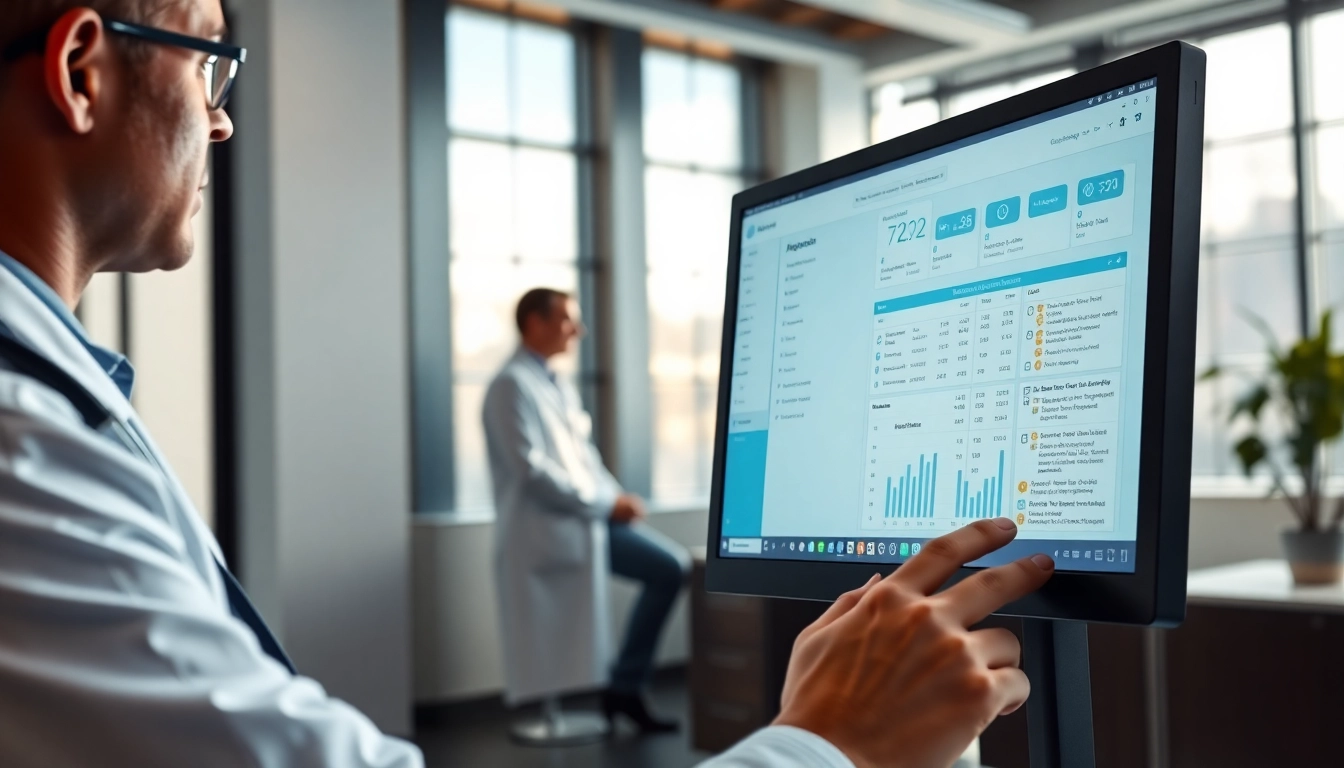Introduction to Eprescribing Software for Doctors
In the medical field, the evolution of technology has profoundly transformed administrative and clinical processes. Among these advancements, eprescribing software for doctors has emerged as a pivotal tool that not only streamlines the prescription process but also significantly enhances patient safety and care efficiency. This software allows healthcare providers to electronically send prescriptions directly to pharmacies, replacing the traditional paper method. In this article, we will explore the critical aspects of eprescribing software, including its benefits, functionalities, essential features, and guidance on selecting and implementing the right software for medical practices.
What is Eprescribing Software for Doctors?
Eprescribing software is a digital solution that enables healthcare providers to create, modify, and send prescriptions electronically rather than through handwritten notes. It integrates seamlessly with electronic health record (EHR) systems and allows for real-time access to patient medication histories and allergies, thereby reducing the risks of human error associated with traditional paper prescriptions. The software often includes features such as drug interaction checks, formulary checks, and medication history retrieval, which aid physicians in making informed prescribing decisions.
Benefits of Eprescribing Software for Doctors
The benefits of adopting eprescribing software for doctors extend far beyond simplification of the prescription process. Here are some key advantages:
- Improved Patient Safety: Eprescribing minimizes errors associated with handwriting issues and allows for real-time checking of drug interactions and contraindications.
- Enhanced Efficiency: The software significantly reduces the time spent on refilling prescriptions or managing prior authorizations, allowing healthcare professionals to focus more on patient care.
- Increased Compliance: Many systems help ensure adherence to state regulations and provide audit trails, making it easier to comply with legal requirements.
- Convenience for Patients: Patients benefit from faster access to their medications and reduced waiting times at pharmacies, streamlining the overall healthcare experience.
- Cost Effectiveness: Long-term financial savings can be realized through reduced administrative burdens and lower prescription error rates.
How Eprescribing Software for Doctors Works
The functionality of eprescribing software is typically straightforward, involving several key steps:
- The healthcare provider inputs the patient’s prescription into the software.
- The system verifies the prescription against the patient’s medication history, allergies, and possible drug interactions.
- The software communicates with the selected pharmacy to electronically send the prescription.
- Patients receive notifications (if applicable) about their prescriptions, including dosage instructions and pharmacy pickup details.
- The provider can track and manage prescriptions, making adjustments as necessary.
Key Features of Eprescribing Software for Doctors
User-Friendly Interface
An intuitive user interface is essential for eprescribing software, as it directly impacts the efficiency of the prescribing process. The software should feature clear navigation, and easily accessible tools must allow providers to quickly input and manage prescriptions with minimal clicks.
Integration with EHR Systems
Seamless integration with existing EHR systems is crucial for maximizing the effectiveness of eprescribing software. This integration allows for holistic patient data management, ensuring that all providers have access to the information needed to make informed decisions regarding patient care.
Compliance and Security Measures
Given the sensitivity of personal health information, robust security measures are a non-negotiable feature of any eprescribing software. Compliance with regulations such as HIPAA ensures that patient information is protected from breaches. Effective software should include features such as encryption, user authentication, and audit logging to maintain the integrity and confidentiality of patient data.
Selecting the Right Eprescribing Software for Doctors
Assessing Your Practice Needs
Before selecting an eprescribing solution, it is vital to assess the unique needs of your medical practice. Consider factors such as the size of your practice, the complexity of patient cases you handle, and the specific features that would benefit your workflow. Engaging with your staff in the decision-making process can lead to better overall satisfaction with the tool selected.
Comparing Different Eprescribing Software for Doctors
Not all eprescribing software is created equal. When comparing options, consider the following criteria:
- Feature Set: Ensure the software includes essential features such as patient history access, formulary checks, and secure messaging capabilities.
- Price: Pricing models can vary significantly. Some solutions may charge per transaction, while others have a subscription model.
- Customer Support: Evaluate the level of support available, as prompt assistance is crucial for resolving issues that may arise during usage.
- User Feedback: Look for reviews and testimonials from other healthcare providers to gauge real-world experiences.
Understanding Pricing Models
Pricing models for eprescribing software can take various forms, including tiered subscriptions, pay-per-prescription fees, or flat monthly rates. Understanding the long-term costs associated with each model is essential to determine which solution aligns best with your practice’s budget and expected prescription volume.
Implementation of Eprescribing Software for Doctors
Steps for Successful Implementation
Implementing new software can be met with challenges. A well-structured approach is essential for a smooth transition:
- Planning: Detail out the implementation timeline and involve all stakeholders in the planning phase.
- Testing: Before going live, conduct thorough testing of the software within your systems to identify any glitches.
- Launch: Roll out the software during low-traffic times to minimize disruptions.
- Feedback Loop: Establish a method for collecting feedback from users about the system’s performance and any necessary adjustments.
Training Staff on Eprescribing Software for Doctors
Effective training is crucial for successful software adoption. Developing comprehensive training sessions tailored to different user roles will ensure that every member of your staff is comfortable using the new system. Ongoing support and refresher courses can reinforce knowledge and enhance software proficiency.
Common Challenges and Solutions
Despite the software’s advantages, challenges may surface during implementation and day-to-day use:
- Resistance to Change: Engage staff early in the planning process to minimize resistance. Highlight the benefits of the new system and solicit their feedback for a more collaborative transition.
- Technical Issues: Establish a reliable IT support mechanism to quickly address any technical hurdles that arise during use.
- Integration Problems: Ensure that the chosen eprescribing software is compatible with your existing systems. Conduct integration testing to resolve potential conflicts.
Evaluating the Impact of Eprescribing Software for Doctors
Key Performance Indicators to Track
To assess the effectiveness of your eprescribing solution, it is crucial to identify and monitor key performance indicators (KPIs). Important metrics include:
- Prescription Error Rates: A decrease in errors post-implementation can be a strong indicator of improved safety.
- Prescription Fulfillment Rates: Tracking how many prescriptions are successfully filled can help evaluate efficiency.
- Time Saved: Measuring time spent on prescription management tasks before and after implementation can provide insights into efficiency improvements.
Patient Satisfaction and Safety
Patient satisfaction is a vital measure of a healthcare service’s quality. Regularly collect patient feedback regarding their prescribing experiences, and analyze these insights to identify areas for enhancement. Additionally, understanding adverse drug events and monitoring safety data can help gauge the software’s effectiveness in enhancing patient safety.
Continuous Improvement Practices
Even after successful implementation, continuously improving how your practice uses eprescribing software is essential. Regularly review performance metrics, seek staff feedback, and stay updated with software enhancements and updates. Embracing a culture of continuous improvement will ensure that you maximize the benefits of your chosen eprescribing solution.



